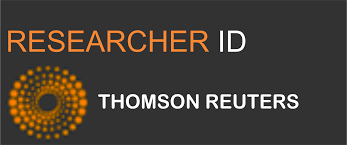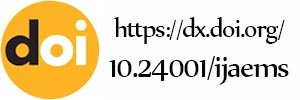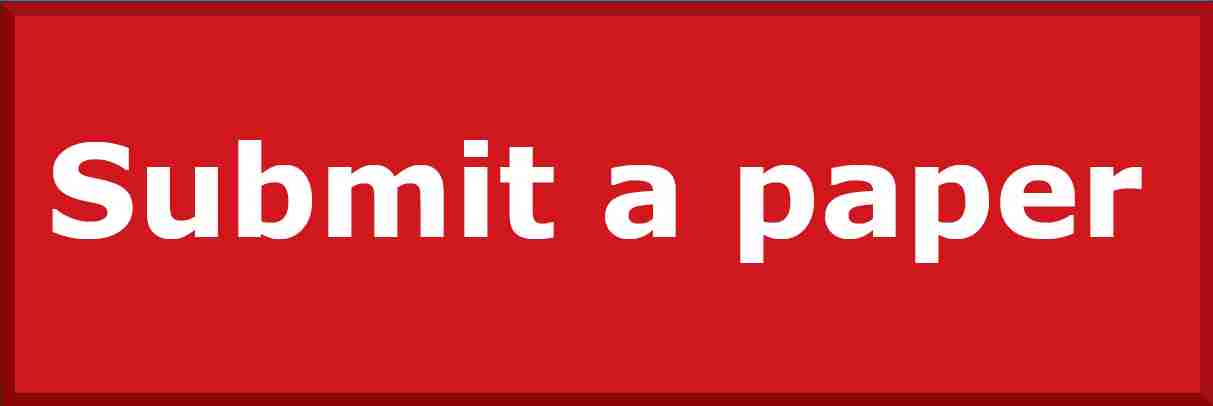Practicality and Effectiveness of Student’ Worksheets Based on Ethno science to Improve Conceptual Understanding in Rigid Body ( Vol-4,Issue-5,May 2018 ) |
Author(s): |
|
Agnes Amila W, Abdurrahman, Agus Suyatna, I Wayan Distrik, Kartini Herlina |
Keywords: |
|
Effectiveness, Ethno science, Conceptual Understanding, Practicality, Student Worksheet. |
Abstract: |
|
Generally, the learning process in classes still used worksheets that does not link the matter and instructional topics with local knowledge of local area. Though it is able to increase the students' conceptual understanding of the specific physics topics. This study aimed to analyze the practicality and effectiveness student’ worksheet based on Ethno science in improving student understanding of rigid body’ concept. The study used a quasi-experimental with pretest-post test control group design. The sample was students’ senior high school in Lampung’ province, Indonesia. The sampling technique used simple random sampling technique. Data were obtain through the questionnaire, responses of teachers and students, and test of learning outcome in multiple choice questions reasoned type. Data were analyzed by percentage, N-gain, and effect size. The results showed that student worksheet based on Ethno science was practically using in learning and effective in improving conceptual understanding which is indicated by the differences in test results between the control and the experimental class. |
|
|
Cite This Article: |
| Show All (MLA | APA | Chicago | Harvard | IEEE | Bibtex) |
Paper Statistics: |
Share: |
References: |
|
[1] Abdurrahman, A., Saregar, A., &Umam, R. (2018). The Effect of Feedback as Soft Scaffolding on Ongoing Assessment Toward The Quantum Physics Concept Mastery of The Prospective Physics Teachers. JurnalPendidikan IPA Indonesia, 7(1), 34-40.
[2] Afrianawati, S., Sudarmin, &Sumarni, W. (2016). Model pembelajarankimiaberbasisetnosainsuntuk Meningkatkankemampuanberpikirkritissiswa. Jurnal Pengajaran MIPA,21(1), pp. 46-51. [3] Anderson, I.W. & Krathwohl, D.R. (2001). A Taxonomy for Learning, Teaching and Assesing. A revision of Bloom’s Taxonomy of education Objectives. New York: Addison Wesley. [4] Arikunto, Suharsimi. (2006). Dasar-dasar Evaluasi Pendidikan. Jakarta: Bumi Aksara [5] Battiste, M. (2002). Indegenous knowledge and pedagogy in first nation education a literature review with recomenation. Accessed on Mei 2018.http: // www.afn. ca / uploads/files/education/24._2002_ [6] Becker, L. A. (2000). Effect size (ES). Accessed on October, 12(2006), pp. 155-159. [7] Berkes, F., Colding, J., &Folke, C. (2000). Rediscovery of traditional ecological knowledge as adaptive management. Ecological Applications, 10(5), pp. 1251–1262. [8] Canon, H.M & Feinstein, A. H. (2005). Bloom Beyond Bloom: Using the Revised Taxonomy to Develop Experiential Learning Strategies. Developments in business Simulations and Experiential Learning, 32, pp. 348-356. [9] Dhanya, C. H., & Pankajam, R. (2017). Environmental awareness among secondary school students. International Journal of Research - Granthaalayah, 5(5), pp. 22-26. [10] Gasat, V. J. P., Del Rosario, M. P. N., and Monalo, F. O. (2017). Comparative Analysis of Traditional versus Authentic Teaching Method in DNA Extraction to Biology Students.International Journal of Advanced Engineering, Management and Science (IJAEMS), 3, pp. 199-204 [11] Hake, R. R. (2001). Lessons from the physics-education reform effort. Lessons from the physics-education reform effort. arXiv preprint physics/0106087. [12] Kartimi. (2014). Implementation of biology learning based on local science culture to improvement of senior high school students learning outcome in Cirebon district and Kuningan district. Scientiae Educatia, 3, pp. 1-10. [13] Kementerian Pendidikandan Kebudayaan. (2014). Konsepdan Implementasi Kurikulum 2013. Jakarta: Kementerian Pendidikandan Kebudayaan. [14] Kidman, J., Chiung, F., & Eleanor, A. (2013). Indegenous student experiences of the hidden curriculum in science education: A cross national study in New Zealand and Taiwan. International Journal of Science and Mathematics Education, 11(2), pp. 43-64. [15] Knuth, R.A. & Jones, B.F. (2002). Teachers’ conception of proof in the context of secondary school mathematics. Journal of Mathematics Teacher Education, 5(1), pp. 61-88. [16] Misnah. (2015). Kearifan Lokal Sebagai Sumber Pembelajaran IPS. Bandung: Pendidikan IPS UPI [17] Mujadi. (2015). Indiginasi Senidan Budayadalam Pembelajaran Fisika.RKPF UAD, 2(2).pp. 67-72 [18] [18] Novi, R., & Parmin. (2012). Pengembangan Modul Pembelajaran IPA Terpadu Berwawasan Sains, Lingkungan, Teknologi, danMasyarakat. Jurnal Penelitian Pendidikan, 29(8), pp. 125-136. [19] Nurulsari, N., Abdurrahman A., &Suyatna, A. (2017). Development of soft scaffolding strategy to improve student’s creative thinking ability in physics.Journal of Physics: Conference Series, 909, pp. 1-8. [20] Parmin, Sajidan, Ashadi, Sutikno, & Fibriana, F. (2017). Science integrated learning model to enhance the scientific work independence of student teacher in indigenous knowledge transformation. JurnalPendidikan IPA Indonesia, 6(2), pp. 365-372. [21] Permendikbud No. 22 Tahun 2006 tentangStandar Isi untuk Satuan Pendidikan Dasardan Mennegah. Jakarta. [22] Rahayu, W. E., & Sudarmin. (2015). Pengembanganmodul IPA terpaduberbasisetnosainstemaenergidalamkehidupanuntukmenanamkanjiwakonservasisiswa.Unnes Science Education Journal, 4(2), pp. 920-926. [23] Rist, S., &Dahdouh, F. G. (2006). Ethno sciences––A step towards the integration of scientific and indigenous forms of knowledge in the management of natural resources for the future. Journal of EnvDevSustain ,8(4), pp. 467-493. [24] Ruheza, S, Mattee, Z.A; Chingonikaya, E.E, and, ZuenaKilugwe, (2013). Integration of The Indegenous Knowledge System (IKS) for sustainnable management and use of biodiversity in South Nguru mountain forest: The influence of socio-economic and politiccal factors. Journal of Sustainable Development in Africa, 15(8), pp.94-114. [25] Sahala, S., & Oktavianty, E. (2013). Remediasikesulitanbelajarsiswakelas XII IPA MAN 1 Pontianak padamateridinamikarotasimenggunakan model learning cycle 5E. Jurnal Pendidikandan Pembelajaran, 2(6). [26] Sardjiyo. (2005). Pembelajaranberbasisbudaya model inovasipembelajarandanimplementasikurikulumberbasiskompetensi. JurnalPendidikan, 6(2), pp. 83-98. [27] Sudarmin, Febu, R., Nuswowati, M., &Sumarni, W. (2017). Development of Ethno science approach in the module theme substance additives to improve the cognitive learning outcome and student’s entrepreneurship. Journal of Physics, 824, pp. 1-14. [28] Sumarni, W., Sudarmin, Wiyanto, Rusilowati, A., &Susilaningsih, E. (2017). Chemical literacy of teaching candidates studying the integrated food chemistry etnosciences course.Journal of Turkish Science Education,14, pp. 60-72. [29] Suryani, Y., Distrik, I.W., and Suyatna, A. (2018). The practicality and effectiveness of student worksheet based multiple representation to improve conceptual understanding and students’problem-solving ability of physics. International Journal of Research -Granthaalayah, 6(4), pp. 166-173. [30] Talens, J. D. (2016). Development and Validation of Responsible Environmental Behavior Scale towards Solid Waste Management (REBS-SWM) in School Setting. International Journal of Advanced Engineering, Management and Science (IJAEMS), 2, pp. 191-197. [31] Uno, H. B. (2008). PerencanaanPembelajaran. Jakarta: BumiAksara [32] Ward, J. (2010). Grounding curriculum and pedagogies in indigenous knowledge and indigenous knowlegde systems. Accessed on Mei 2018: ejournal.narotama.ac.id |
















